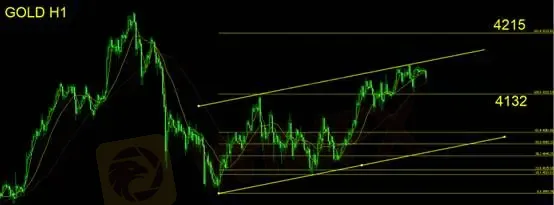简体中文
繁體中文
English
Pусский
日本語
ภาษาไทย
Tiếng Việt
Bahasa Indonesia
Español
हिन्दी
Filippiiniläinen
Français
Deutsch
Português
Türkçe
한국어
العربية
U.S. September PCE Released Tonight: Will Consumer Behavior Start to Shift?
Sommario:The U.S. will release its September Personal Consumption Expenditures (PCE) report tonight, and markets are watching closely to see whether consumer behavior is beginning to change.The data will help
The U.S. will release its September Personal Consumption Expenditures (PCE) report tonight, and markets are watching closely to see whether consumer behavior is beginning to change.
The data will help investors gauge whether personal consumption—currently the primary engine of U.S. economic momentum—can remain resilient. A key concern is whether persistent price pressures are eroding disposable income enough to trigger a pullback in household spending.
Thus far, equity market strength has been supported largely by robust goods-related consumption. If consumers remain willing to spend on non-essentials, we believe the economic downside remains limited. With the Thanksgiving shopping season now underway, holiday demand may continue to support fourth-quarter economic performance.
According to The Economist, prices for daily essentials have risen sharply, raising questions about whether higher costs for necessities will crowd out spending on discretionary goods—an issue investors should watch closely.
A weaker-than-expected PCE reading would likely raise market expectations for a Federal Reserve rate cut at the December meeting.
Chart Interpretation: Daily Essentials Outrunning Wage Growth
Prices for coffee, eggs, milk, orange juice, and steak have risen dramatically faster than average wages, sharply reducing consumers purchasing power.

(Chart 1: “Daily essentials as a driver of modern inflation”; Source: Financial Times)
Meanwhile, dining out now costs roughly 30% more than before, and even home-cooked food has seen cost inflation well above average wage gains. In response to growing consumer dissatisfaction, media reports indicate that President Trump is considering cutting import tariffs on coffee, bananas, beef, and other food items to ease household burdens.
Chart 2 shows that living costs in the U.S. have surged—dining out has reached an index level of 129, while housing inflation ranks as the second-highest cost increase, making rent and shelter one of the largest financial challenges for households.

(Chart 2: “Past five-year wage growth – blue line vs. food and rent burden – gray line”; Source: Financial Times)
Although September‘s PCE is already in the rear-view mirror, the trend remains a critical input for the Fed’s December policy decision, which in turn will significantly influence gold prices.
Gold Technical Analysis

Building on yesterdays analysis, gold has broken above the $4,150/oz Fibonacci 61.8% retracement, shifting the technical outlook decisively toward the bullish side.
We have redrawn the Fibonacci extension projection:
Upside target (Fibonacci extension): $4,215/oz
Key support: $4,132/oz
If gold holds firmly above $4,132, prices may continue to gravitate toward the $4,215 upside target.
We also outlined an ascending channel to monitor gold‘s upward momentum. A breakdown below $4,132 would signal weakening bullish commitment, shifting the trend into a fragile upward grind and opening a retest of the channel’s lower boundary.
📌 Trading Strategy
Bullish above: $4,132
Bearish below: break below $4,132 triggers short positions
Recommended stop-loss: $15
Support: 4,132
Resistance: 4,215
Risk Disclaimer
The views, analysis, research, price levels, and other information provided above are for general market commentary only and do not represent the official position of this platform. All readers should evaluate risks independently and exercise caution when trading.
Disclaimer:
Le opinioni di questo articolo rappresentano solo le opinioni personali dell’autore e non costituiscono consulenza in materia di investimenti per questa piattaforma. La piattaforma non garantisce l’accuratezza, la completezza e la tempestività delle informazioni relative all’articolo, né è responsabile delle perdite causate dall’uso o dall’affidamento delle informazioni relative all’articolo.
WikiFX Trader
Vantage
JustMarkets
octa
IC Markets Global
HFM
FXCM
Vantage
JustMarkets
octa
IC Markets Global
HFM
FXCM
WikiFX Trader
Vantage
JustMarkets
octa
IC Markets Global
HFM
FXCM
Vantage
JustMarkets
octa
IC Markets Global
HFM
FXCM
Rate Calc



